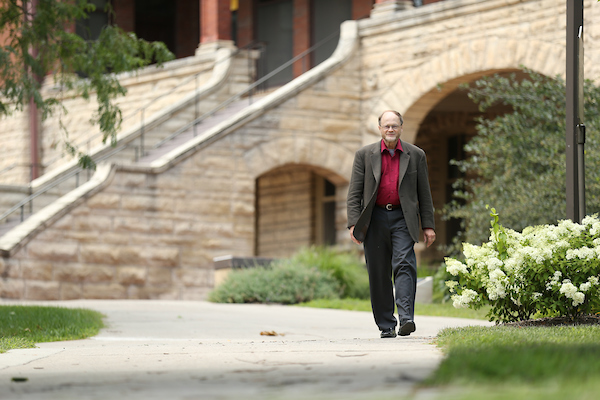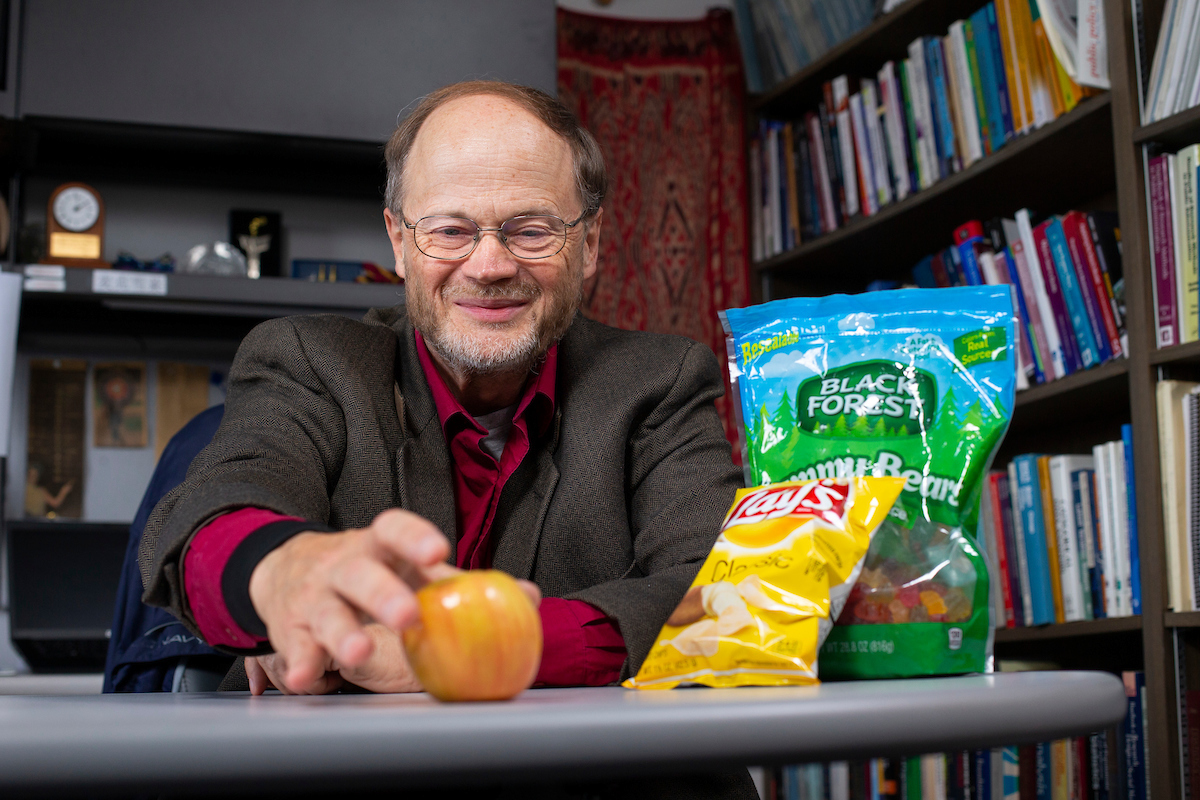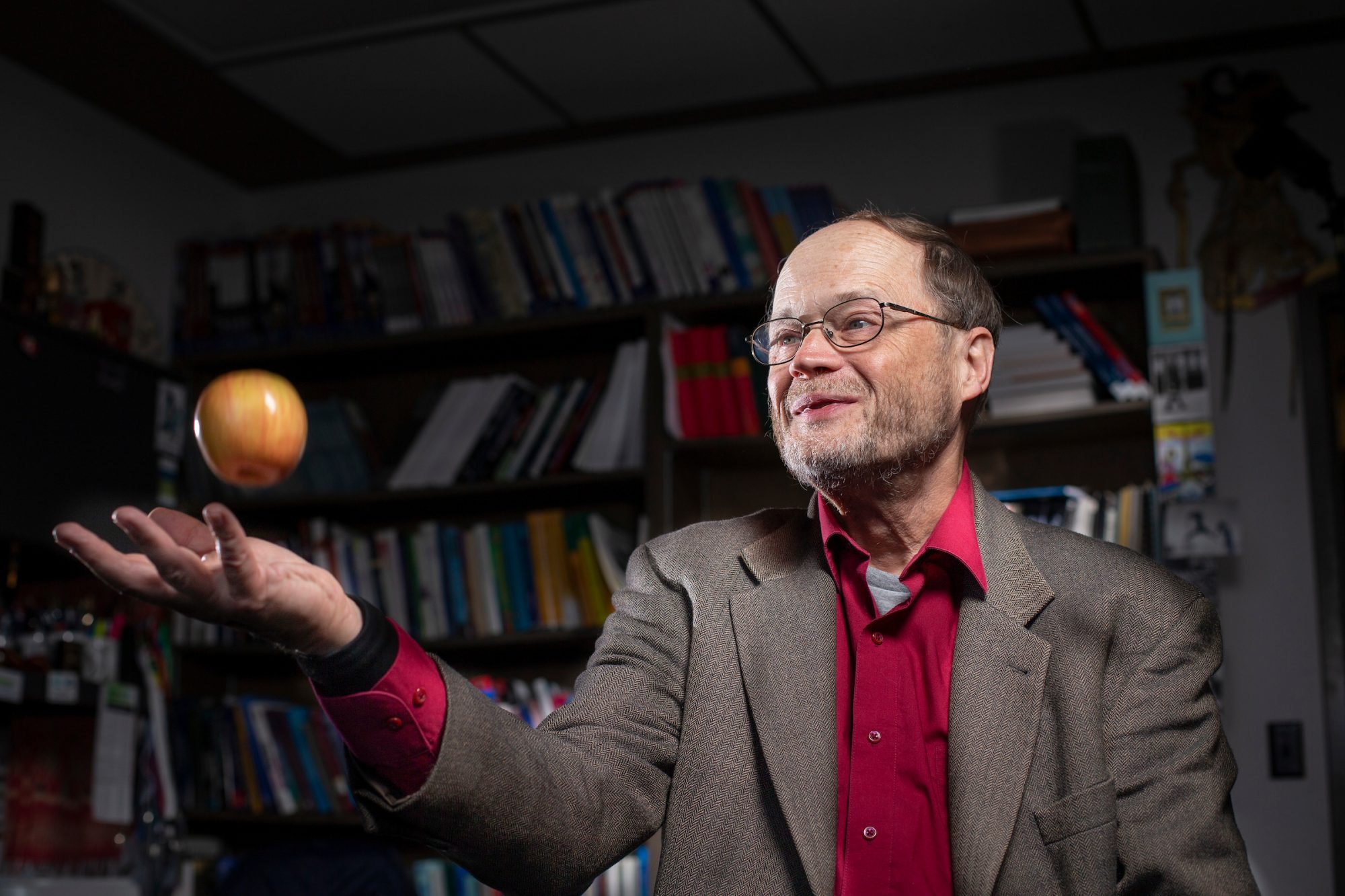When you think of political science, nutrition for children may not be the first thing that comes to mind.
However, Mack Shelley, University Professor and chair of the Iowa State University Department of Political Science, has applied his expertise in statistics and public policy to help encourage children to reach for healthy snack options instead of empty calories. For 15 years, he has worked with the Iowa Department of Public Health and Iowa Nutrition Network on the Pick a Better Snack (PABS) program, acting as the project’s statistician and measuring the program’s effectiveness.
Despite nearly four decades in the statistics and political science departments, Shelley is humble about his qualifications. However, he does recognize the multifaceted nature of the project and where he fits in. “I’ve had a joint appointment in the Department of Statistics since I started here in 1979,” Shelley explained. “This is about public policy. It’s about obesity, diabetes and general health issues, as well.”
A snack by any other name
Funded by the U.S. Department of Agriculture’s Supplemental Nutrition Assistance Program (SNAP), the SNAP-Ed program targets schools which have a high percentage of students who are eligible for free or reduced-cost lunches. Children from kindergarten through third grade learn about the nutritional benefits of fruits and vegetables.
Students get hands-on experience with nutritious food during monthly lessons - including taste testing, learning what makes the fruits and vegetables healthy, where they are grown, and how they are eaten.
“It’s an intervention designed to provide instruction by nutrition educators - licensed practitioners who come to the classroom and talk about the need for good nutrition and physical activity,” Shelley explained.

PABS aims to reduce childhood obesity and its long-term effects, such as the increased likelihood of developing diabetes. The program focuses on changing eating behaviors and habits, increasing fruit and vegetable consumption and encouraging children to opt for low-fat or fat-free milk instead of whole or flavored milk.
As the statistician on the project, Shelley evaluates students’ change in knowledge, attitude and behaviors regarding choosing healthy snacks. In 2011, for example, the number of students who recognized a carrot is a healthy snack increased from 88.5 to 97 percent. Students also learned what does not qualify as a healthy snack. Students who believed potato chips are a healthy snack decreased from 21.7 to 8.2 percent by the end of the program. Students also demonstrated changes in preferences and knowledge of what a specific food is. In the same year, the number of students who indicated a favorable opinion of cauliflower increased from only 47 percent to 51.6 percent. In fact, 20.5 percent of students initially indicated they did not know what cauliflower was, but that number decreased by 13.1 percent by the end of the program.
Shelley also uses data from surveys to track what kids like to help guide PABS.
“We've come up with reasonable clusters of food items that seem to make logical sense,” he said. “Citrus fruits tend to cluster together. If you like one, you tend to like all of them, or at least most of them.”
As the researchers uncovered clusters, they deployed tactics beyond the classroom.
“I think for most parents, it’s more or less instinctive to try to make sure their children have proper nutrition, but it’s not a trivial thing to arrange. It takes a lot of planning, and eating right becomes an expensive proposition.”
Getting social with healthy snacks
PABS does not only reach students. Parents receive materials, including newsletters, recipes and a community-based social marketing campaign.
The goal of the social marketing campaign, which features community activities and signage in areas around participating schools, is to increase the effectiveness of the PABS program by engaging parents.
“I think for most parents, it’s more or less instinctive to try to make sure their children have proper nutrition, but it’s not a trivial thing to arrange. It takes a lot of planning, and eating right becomes an expensive proposition,” Shelley said.
Engaging parents through the social marketing campaign has a statistically significant impact on getting kids to eat more fruits and vegetables at home. And it is not always parents continuing their children’s education outside of school.
“In some of the analyses, it seems like the kids were sort of leading the parents. We thought that was really intriguing,” Shelley said. “I think the instinctive reaction is the parents will sort of guide the kids.”
An ounce of prevention
In the short term, learning and taste-testing during PABS increased students’ fruit and vegetable intake at home. While other benefits like decreased obesity or diabetes may take longer to see, the focus on stopping the problems before they start is key.
“If you don’t start them down the right path when they’re young, problems are just going to escalate.”
“It’s sort of like the proverbial ounce of prevention. You invest funding at the entry level, trying to convince kids to eat fruits and veggies and stay away from empty calories,” Shelley said. “As a policy researcher, I tend to think of this as an aggregation of a lot of individual instances where kids don’t develop diseases that have a comorbidity with obesity. A huge problem right now is diabetes, and that’s directly traceable to relatively early childhood excesses.”

A fruitful future
Shelley has personal motivation in helping children develop healthy eating habits as early as possible.
“If you don’t start them down the right path when they’re young, problems are just going to escalate,” Shelley said. “I didn’t have a heart attack, but I had a stent put in at 62. Those things are really expensive, by the way.”
With the continued success of PABS and programs like it, there is promise of preventing health problems like those Shelley has faced.
“At a time when state government seems to cut back on anything they can manage to jettison, this is one of the success stories.”
